
Residential solar energy company Sunrun (NASDAQ:RUN) missed Wall Street’s revenue expectations in Q4 CY2024, with sales flat year on year at $518.5 million. Its non-GAAP profit of $1.41 per share was significantly above analysts’ consensus estimates.
Is now the time to buy Sunrun? Find out in our full research report .
Sunrun (RUN) Q4 CY2024 Highlights:
“We are growing, generating meaningful cash, increasing our book value of deployed systems, and paying down debt. We are poised to further improve our operating and financial results, and deliver a very strong 2025 with meaningful Cash Generation. Our actions to optimize our product mix, prioritize the highest value geographies and routes to market and an intense focus on cost as we grow have resulted in the highest Net Subscriber Values Sunrun has ever reported,” said Mary Powell, Sunrun’s Chief Executive Officer.
Company Overview
Helping homeowners use solar energy to power their homes, Sunrun (NASDAQ:RUN) provides residential solar electricity, specializing in panel installation and leasing services.
Renewable Energy
Renewable energy companies are buoyed by the secular trend of green energy that is upending traditional power generation. Those who innovate and evolve with this dynamic market can win share while those who continue to rely on legacy technologies can see diminishing demand, which includes headwinds from increasing regulation against “dirty” energy. Additionally, these companies are at the whim of economic cycles, as interest rates can impact the willingness to invest in renewable energy projects.
Sales Growth
A company’s long-term sales performance can indicate its overall quality. Any business can put up a good quarter or two, but many enduring ones grow for years. Luckily, Sunrun’s sales grew at an incredible 18.9% compounded annual growth rate over the last five years. Its growth beat the average industrials company and shows its offerings resonate with customers.
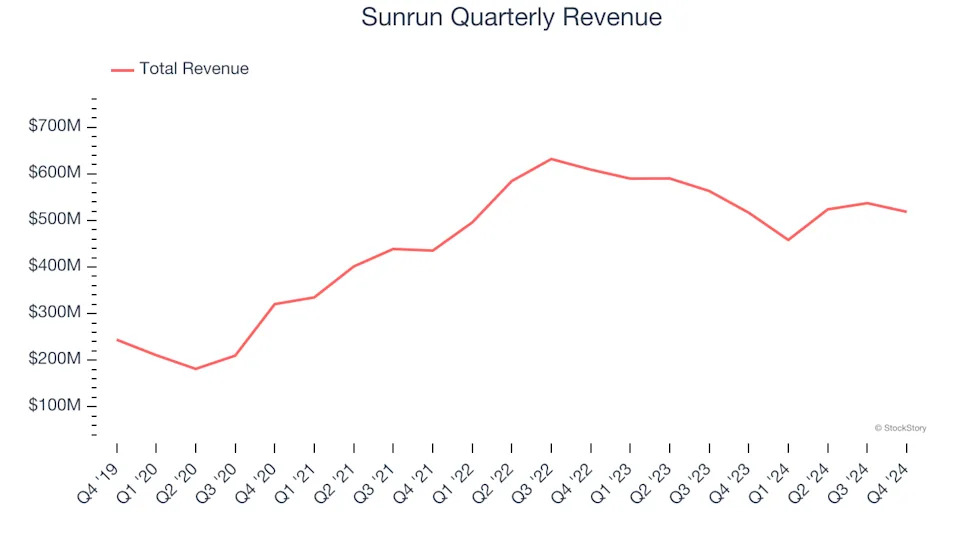
Long-term growth is the most important, but within industrials, a half-decade historical view may miss new industry trends or demand cycles. Sunrun’s recent history marks a sharp pivot from its five-year trend as its revenue has shown annualized declines of 6.3% over the last two years. Sunrun isn’t alone in its struggles as the Renewable Energy industry experienced a cyclical downturn, with many similar businesses observing lower sales at this time.
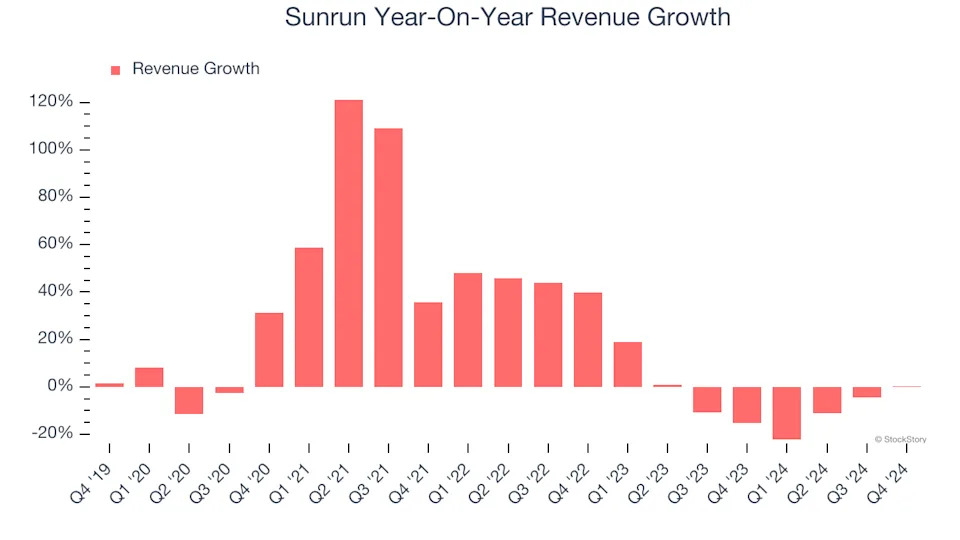
Sunrun also reports its number of customers, which reached 1.05 million in the latest quarter. Over the last two years, Sunrun’s customer base averaged 16.2% year-on-year growth. Because this number is better than its revenue growth, we can see the average customer spent less money each year on the company’s products and services.
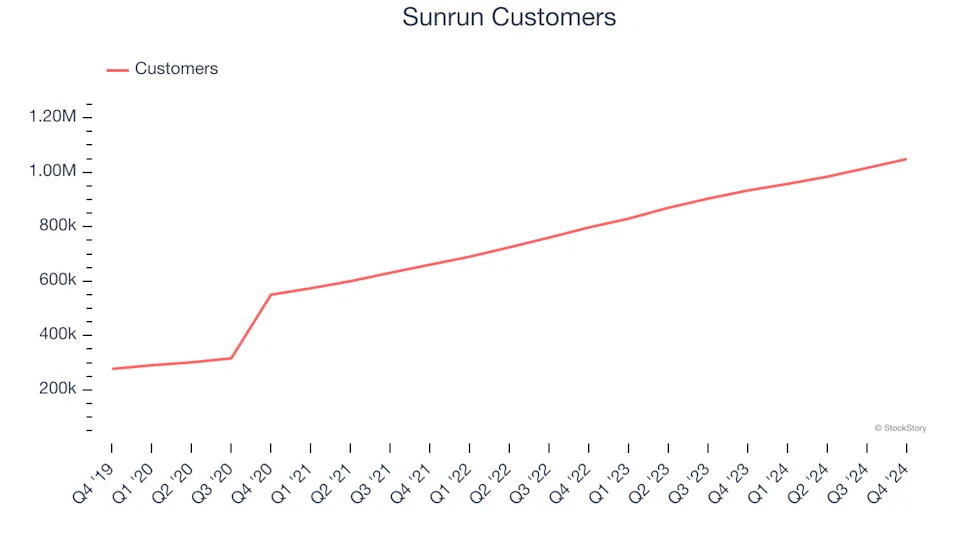
This quarter, Sunrun’s $518.5 million of revenue was flat year on year, falling short of Wall Street’s estimates.
Looking ahead, sell-side analysts expect revenue to grow 13.6% over the next 12 months, an improvement versus the last two years. This projection is admirable and implies its newer products and services will catalyze better top-line performance.
Here at StockStory, we certainly understand the potential of thematic investing. Diverse winners from Microsoft (MSFT) to Alphabet (GOOG), Coca-Cola (KO) to Monster Beverage (MNST) could all have been identified as promising growth stories with a megatrend driving the growth. So, in that spirit, we’ve identified a relatively under-the-radar profitable growth stock benefiting from the rise of AI, available to you FREE via this link .
Operating Margin
Sunrun’s high expenses have contributed to an average operating margin of negative 81.6% over the last five years. Unprofitable industrials companies require extra attention because they could get caught swimming naked when the tide goes out. It’s hard to trust that the business can endure a full cycle.
Analyzing the trend in its profitability, Sunrun’s operating margin decreased significantly over the last five years. This raises an eyebrow about the company’s expense base because its revenue growth should have given it leverage on its fixed costs, resulting in better economies of scale and profitability. . Sunrun’s performance was poor no matter how you look at it - it shows costs were rising and that it couldn’t pass them onto its customers.
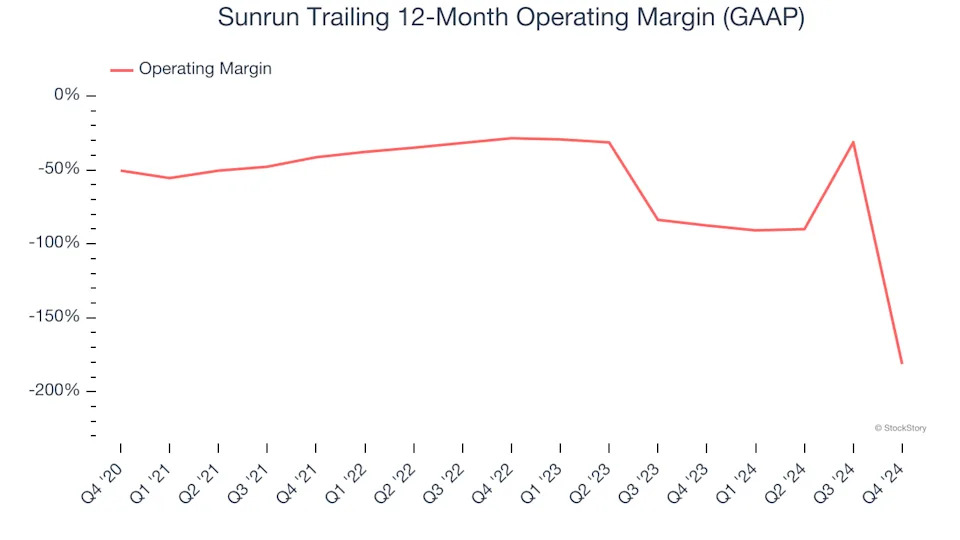
Sunrun’s operating margin was negative 628% this quarter due to a $3.1 billion goodwill impairment.
Earnings Per Share
We track the long-term change in earnings per share (EPS) for the same reason as long-term revenue growth. Compared to revenue, however, EPS highlights whether a company’s growth is profitable.
Sunrun’s EPS grew at an astounding 42.9% compounded annual growth rate over the last five years, higher than its 18.9% annualized revenue growth. However, we take this with a grain of salt because its operating margin didn’t expand and it didn’t repurchase its shares, meaning the delta came from reduced interest expenses or taxes.
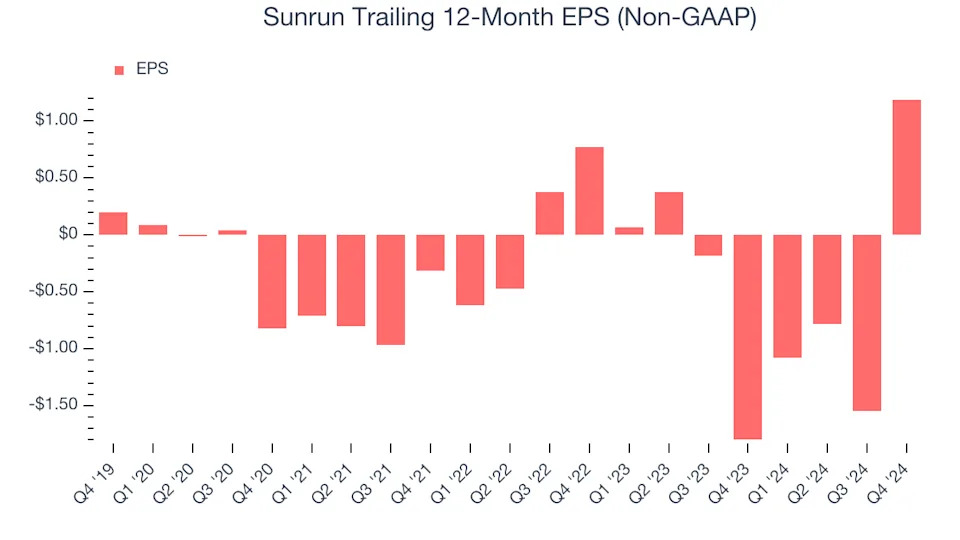
Like with revenue, we analyze EPS over a more recent period because it can provide insight into an emerging theme or development for the business.
For Sunrun, its two-year annual EPS growth of 24.3% was lower than its five-year trend. We still think its growth was good and hope it can accelerate in the future.
In Q4, Sunrun reported EPS at $1.41, up from negative $1.33 in the same quarter last year. This print easily cleared analysts’ estimates, and shareholders should be content with the results. Over the next 12 months, Wall Street expects Sunrun to perform poorly. Analysts forecast its full-year EPS of $1.19 will invert to negative negative $0.50.
Key Takeaways from Sunrun’s Q4 Results
We liked that Sunrun beat analysts’ EPS expectations this quarter when removing the impact of the one-time goodwill impairment. On the other hand, its revenue missed. Overall, this was a mixed quarter. The stock traded up 2.5% to $8.10 immediately following the results.
So do we think Sunrun is an attractive buy at the current price? If you’re making that decision, you should consider the bigger picture of valuation, business qualities, as well as the latest earnings. We cover that in our actionable full research report which you can read here, it’s free .


